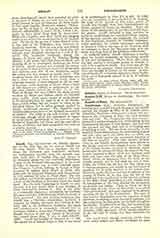

Amalfi, the Archdiocese of, directly dependent on the Holy See, has its seat at Amalfi, not far from Naples. This was a populous city between the thirteenth and fourteenth centuries. An independent republic from the seventh century until 1075, it rivalled Pisa and Genoa in its domestic prosperity and maritime importance. A prey to the Normans who encamped in the south of Italy, it became one of their principal posts. The Emperor Lothair, fighting in favor of Pope Innocent II against King Roger of Sicily, who sided with the Antipope Anacletus, took him prisoner in 1133, assisted by forty-six Pisan ships. The city was sacked, and Lothair claimed as part of the booty a copy of the Pandects of Justinian which was found there. But the early beginnings of Amalfi are very obscure; it is not known when it was founded, or when Christianity reached it. That it was early is a reasonable conjecture, considering the facilities for communication with the East which the South of Italy possessed. The first positive indication that Amalfi was a Christian community, however, is supplied by Gregory the Great, who, writing in January, 596, to the Subdeacon Antemius, his legate and administrator in Campania, ordered him to constrain within a monastery Primenus, Bishop of Amalfi, because he did not remain in his diocese, but roamed about (Reg., V, xiv; cf. Jaffe, RR.PP., 1403). Amalfi was founded by Primenus in A.D. 596; the regular list of bishops began in 829; it was raised to an archbishopric by John XV in 987. In 1206, after the completion of the cathedral of St. Andrew, the body of the Apostle of that name, patron of Amalfi, was brought there from Constantinople by Pietro, cardinal of Capua, an Amalfian. There are about 36,000 inhabitants, 54 parishes, and 279 secular priests. Amalfi occupied a high position in medieval architecture; its cathedral of Sant’ Andrea, of the eleventh century, the campanile, the convent of the Capuccini, founded by Cardinal Capuanor, richly represent the artistic movement prevailing in Southern Italy at the time of the Normans, with its tendency to blend the Byzantine style with the forms and sharp lines of the northern architecture.
In medieval culture Amalfi vindicated a worthy place for herself, especially by flourishing schools of law and mathematics. Flavio Gioia, who made the first mariner’s compasses known to Europe, is said to be a native of Amalfi. But Gioia was not the inventor of the compass, which was invented in the East and brought to Europe by the Arabs. In honor of Charles II, a Capetian king then ruling Naples, Gioia put a fleur-de-lis instead of an N, to indicate the north.
ERNESTO BUONAIUTI

